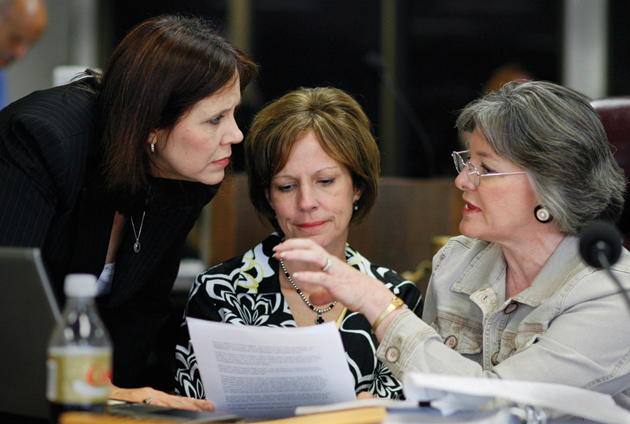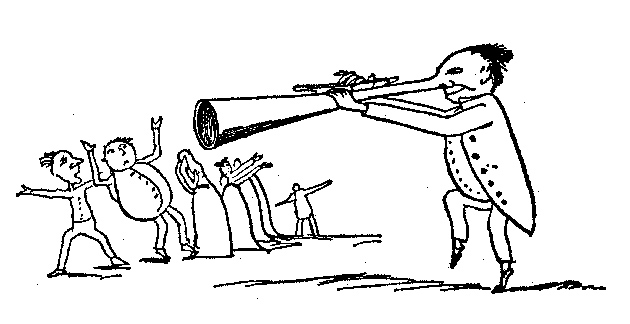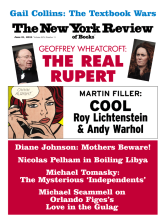
Henry Cabluck/AP Images
Texas State Board of Education members Cynthia Dunbar, Barbara Cargill, and Gail Lowe discussing curriculum standards, Austin, May 2008. Cargill, who was appointed chairwoman last year by Governor Rick Perry, has expressed concern that there are now only ‘six true conservative Christians on the board.’
“What happens in Texas doesn’t stay in Texas when it comes to textbooks”
No matter where you live, if your children go to public schools, the textbooks they use were very possibly written under Texas influence. If they graduated with a reflexive suspicion of the concept of separation of church and state and an unexpected interest in the contributions of the National Rifle Association to American history, you know who to blame.
When it comes to meddling with school textbooks, Texas is both similar to other states and totally different. It’s hardly the only one that likes to fiddle around with the material its kids study in class. The difference is due to size—4.8 million textbook-reading schoolchildren as of 2011—and the peculiarities of its system of government, in which the State Board of Education is selected in elections that are practically devoid of voters, and wealthy donors can chip in unlimited amounts of money to help their favorites win.
Those favorites are not shrinking violets. In 2009, the nation watched in awe as the state board worked on approving a new science curriculum under the leadership of a chair who believed that “evolution is hooey.” In 2010, the subject was social studies and the teachers tasked with drawing up course guidelines were supposed to work in consultation with “experts” added on by the board, one of whom believed that the income tax was contrary to the word of God in the scriptures.
Ever since the 1960s, the selection of schoolbooks in Texas has been a target for the religious right, which worried that schoolchildren were being indoctrinated in godless secularism, and political conservatives who felt that their kids were being given way too much propaganda about the positive aspects of the federal government. Mel Gabler, an oil company clerk, and his wife, Norma, who began their textbook crusade at their kitchen table, were the leaders of the first wave. They brought their supporters to State Board of Education meetings, unrolling their “scroll of shame,” which listed objections they had to the content of the current reading material. At times, the scroll was fifty-four feet long. Products of the Texas school system have the Gablers to thank for the fact that at one point the New Deal was axed from the timeline of significant events in American history.
The Texas State Board of Education, which approves textbooks, curriculum standards, and supplemental materials for the public schools, has fifteen members from fifteen districts whose boundaries don’t conform to congressional districts, or really anything whatsoever. They run in staggered elections that are frequently held in off years, when always-low Texas turnout is particularly abysmal. The advantage tends to go to candidates with passionate, if narrow, bands of supporters, particularly if those bands have rich backers. All of which—plus a natural supply of political eccentrics—helps explain how Texas once had a board member who believed that public schools are the tool of the devil.
Texas originally acquired its power over the nation’s textbook supply because it paid 100 percent of the cost of all public school textbooks, as long as the books in question came from a very short list of board-approved options. The selection process “was grueling and tension-filled,” said Julie McGee, who worked at high levels in several publishing houses before her retirement. “If you didn’t get listed by the state, you got nothing.” On the other side of the coin, David Anderson, who once sold textbooks in the state, said that if a book made the list, even a fairly mediocre salesperson could count on doing pretty well. The books on the Texas list were likely to be mass-produced by the publisher in anticipation of those sales, so other states liked to buy them and take advantage of the economies of scale.
“What happens in Texas doesn’t stay in Texas when it comes to textbooks,” said Dan Quinn, who worked as an editor of social studies textbooks before joining the Texas Freedom Network, which was founded by Governor Ann Richards’s daughter, Cecile, to counter the religious right.
As a market, the state was so big and influential that national publishers tended to gear their books toward whatever it wanted. Back in 1994, the board requested four hundred revisions in five health textbooks it was considering. The publisher Holt, Rinehart and Winston was the target for the most changes, including the deletion of toll-free numbers for gay and lesbian groups and teenage suicide prevention groups. Holt announced that it would pull its book out of the Texas market rather than comply. (A decade later Holt was back with a new book that eliminated the gay people.)
Advertisement
Given the high cost of developing a single book, the risk of messing with Texas was high. “One of the most expensive is science,” McGee said. “You have to hire medical illustrators to do all the art.” When she was in the business, the cost of producing a new biology book could run to $5 million. “The investments are really great and it’s all on risk.”
Imagine the feelings of the textbook companies—not to mention the science teachers—when, in response to a big push from the Gablers, the state board adopted a rule in 1974 that textbooks mentioning the theory of evolution “should identify it as only one of several explanations of the origins of humankind” and that those treating the subject extensively “shall be edited, if necessary, to clarify that the treatment is theoretical rather than factually verifiable.” The state attorney general eventually issued an opinion that the board’s directive wouldn’t stand up in court, and the rule was repealed. But the beat went on.
“Evolution is hooey”
Texas is hardly the only state with small, fierce pressure groups trying to dictate the content of textbooks. California, which has the most public school students, tends to come at things from the opposite side, pressing for more reflection of a crunchy granola worldview. “The word in publishing was that for California you wanted no references to fast food, and in Texas you wanted no references to sex,” Quinn told me. But California’s system of textbook approval focuses only on books for the lower grades. Professor Keith Erekson, director of the Center for History Teaching and Learning at the University of Texas at El Paso, says that California often demands that its texts have a Californiacentric central narrative that would not be suitable for anywhere else, while “the Texas narrative can be used in other states.” Publishers tend to keep information on who buys how much of what secret, but Erekson said he’s seen estimates that the proportion of social studies textbooks sold containing the basic Texas-approved narrative range from about half to 80 percent.
Some extremely rich Texans have gotten into the board of education election game, putting their money at the disposal of conservative populists. No one has had more impact than James Leininger, the San Antonio physician who has had an intense interest in promoting school vouchers. He backed a group called Texans for Governmental Integrity, which was particularly active in state school board elections. Its most famous campaign was in 1994, when it mailed flyers to voters’ homes in one district, showing a black man kissing a white man and claiming that the Democratic incumbent had voted for textbooks that promoted homosexuality. Another organization Leininger has supported, the Heidi Group, sent out a prayer calendar in 1998, which unnervingly urged the right-to-life faithful to devote one day to praying that a San Antonio doctor who performed abortions “will come to see Jesus face to face.”
The chorus of objections to textbook material mounted. Approval of environmental science books was once held up over board concern that they were teaching children to be more loyal to their planet than their country. As the board became a national story and a national embarrassment, the state legislature attempted to put a lid on the chaos in 1995 by restricting the board’s oversight to “factual errors.” This made surprisingly little impact when you had a group of deciders who believed that the theory of evolution, global warming, and separation of church and state are all basically errors of fact.
In 2009, when the science curriculum was once again up for review, conservatives wanted to require that it cover the “strengths and weaknesses” of the theory of evolution. In the end, they settled for a face-saving requirement that students consider gaps in fossil records and whether natural selection is enough to explain the complexity of human cells. Don McLeroy, the board chairman who had opined that “evolution is hooey,” told Washington Monthly that he felt the changes put Texas “light years ahead of any other state when it comes to challenging evolution!”
The process by which the board came to its interesting decisions sometimes seemed confused to the point of incoherence. Things would begin tidily, with panels of teachers and expert consultants. Then the expert consultants multiplied, frequently becoming less and less expert, until the whole process ended in a rash of craziness. The science curriculum was “this document that had been worked on for months,” Nathan Bernier, a reporter for KUT in Austin, told National Public Radio.
Members of the [teachers’ association] had been involved…. People with Ph.D.s had been involved in developing these standards. And then at the last second, there was this mysterious document that was shoved underneath the hotel doors of some of the board members, and this document, at the very last minute, wound up—large portions of it wound up making its way into the guidelines.
In 2010, the board launched itself into the equally contentious sea of the social studies curriculum, and the teacher-dominated team tasked with writing the standards was advised by a panel of “experts,” one of whom was a member of the Minutemen militia. Another had argued that only white people were responsible for advancing civil rights for minorities in America, since “only majorities can expand political rights in America’s constitutional society.”
Advertisement
“The way I evaluate history textbooks is first I see how they cover Christianity and Israel,” McLeroy told Washington Monthly. “Then I see how they treat Ronald Reagan—he needs to get credit for saving the world from communism and for the good economy over the last twenty years because he lowered taxes.”
In their first year of work on social studies, the board agreed that students should be required to study the abandonment of the gold standard as a factor in the decline in the value of the dollar. If the students were going to study the McCarthy anti-Communist witch hunt of the 1950s, they were also going to contemplate “how the later release of the Venona papers confirmed suspicions of communist infiltration in US government.”
The changes often seemed to be thrown out haphazardly, and to pass or fail on the basis of frequently opaque conclusions on the part of the swing members. In 2010, the board tossed out books by the late Bill Martin Jr., the author of Baby Bear, Baby Bear, What Do You See?, from a list of authors third-graders might want to study because someone mixed him up with Bill Martin, the author of Ethical Marxism.

The final product the board came up with called for a curriculum that would make sure that students studying economic issues of the late nineteenth century would not forget “the cattle industry boom” and that when they turned to social issues like labor, growth of the cities, and problems of immigrants they also take time to dwell on “the philanthropy of industrialists.” When it came to the Middle Ages, the board appeared to be down on any mention of the Crusades, an enterprise that tends to reflect badly on the Christian side of Christian–Islamic conflict. And when they got to the cold war era, the board wanted to be sure students would be able to “explain how Arab rejection of the State of Israel has led to ongoing conflict.” Later, they were supposed to study “Islamic fundamentalism and the subsequent use of terrorism by some of its adherents.” And that appeared to be pretty much all young people in Texas were going to be required to know about Arab nations and the world’s second-largest religion.
For the most part, however, the board seemed determined just to sprinkle stuff its members liked hither and yon, and eliminate words they found objectionable in favor of more appealing ones. Reading through the deletions and additions, it becomes clear that a majority of board members hated the word “democratic,” for which they consistently substituted “constitutional republic.” They also really disliked “capitalism” (see rather: “free enterprise system”) and “natural law” (“laws of nature and nature’s God”).
Study of the first part of the twentieth century should include not only the Spanish-American War and Theodore Roosevelt but also Sanford B. Dole, a Hawaiian lawyer and son of missionaries. When teachers get to Clarence Darrow, Henry Ford, and Charles Lindbergh, they’d also better not forget Glenn Curtiss, who broke early motorcycle speed records. For the modern era, they needed to study “the conservative resurgence of the 1980s and 1990s,” including Equal Rights Amendment opponent Phyllis Schlafly, the Contract With America, the Heritage Foundation, the Moral Majority, and the National Rifle Association. And when students learn how to describe the impact of cultural movements like “Tin Pan Alley, the Harlem Renaissance, the Beat Generation, rock and roll,” the board demanded that they also look into “country and western music.”
That last one actually seems totally fair.
The social studies curriculum was perhaps the last hurrah for the extreme agenda that Don McLeroy, the anti-evolution dentist, had championed. When the discussions began, he could frequently rally a majority on the fifteen-member panel, with the consistent support of people like Cynthia Dunbar, who once wrote that sending children to public schools was like “throwing them into the enemy’s flames, even as the children of Israel threw their children to Moloch.” (She also once called Barack Obama a terrorist sympathizer.) In 2011, Dunbar announced her retirement; she had been commuting between Texas and Virginia, where she taught at Jerry Falwell’s Liberty University School of Law. After McLeroy himself lost a Republican primary to a candidate who believes in evolution, Barbara Cargill, his successor as board chair, expressed concern that she was left with only “six true conservative Christians on the board.”
“Readable? I’ve never heard a discussion of that”
These days the Texas board is far less powerful than in its heyday. But in a way, it’s more influential than ever.
The state legislature has diluted the board’s ability to control what books local districts pick. And the expanding Web-based curricula make it easier for publishers to work around the preferences of any one state, no matter how big. But students all around the country will be feeling the effect of Texas on their textbooks for years, if not generations. That’s because the school board’s most important contribution has not been to make textbooks inaccurate. It’s been to help make them unreadable.
“Readable? I’ve never heard a discussion of that,” said Julie McGee.
The typical school textbook is composed of a general narrative sprinkled liberally with “boxes”—sidebars presenting the biographies of prominent individuals, and highlighting particular trends, social issues, or historical events. As the textbook wars mounted, those boxes multiplied like gerbils. It’s the ideal place to stash the guy who broke the motorcycle speed record, or the cattle boom, or, perhaps, the gold standard. (It’s also where, in bows to gender and racial equality, mini-biographies of prominent women and minorities can be floated.) In an era of computerized publishing, changing the boxes is easy. The problem comes when the publisher has to change the narrative, something many committees of experts may have labored over at the cost of millions of dollars.
All the bickering and pressuring over the years has caused publishers to shy away from using the kind of clear, lively language that might raise hackles in one corner or another. The more writers were constrained by confusing demands and conflicting requests, the more they produced unreadable mush. Texas, you may not be surprised to hear, has been particularly good at making things mushy. In 2011, the Thomas B. Fordham Institute, a conservative education think tank, issued an evaluation of US history standards for public schools. The institute was a longtime critic of curricula that insisted that representatives of women and minorities be included in all parts of American history. But the authors, Sheldon Stern and Jeremy Stern, really hated what the Texas board had done. Besides incorporating “all the familiar politically correct group categories,” the authors said,
the document distorts or suppresses less triumphal or more nuanced aspects of our past that the Board found politically unacceptable (slavery and segregation are all but ignored, while religious influences are grossly exaggerated). The resulting fusion is a confusing, unteachable hodgepodge.
All around the country, teachers and students are left to make their way through murky generalities as they struggle through the swamps of boxes and lists. “Maybe the most striking thing about current history textbooks is that they have lost a controlling narrative,” wrote historian Russell Shorto.
And that’s the legacy. Texas certainly didn’t single-handedly mess up American textbooks, but its size, its purchasing heft, and the pickiness of the school board’s endless demands—not to mention the board’s overall craziness—certainly made it the trend leader. Texas has never managed to get evolution out of American science textbooks. It’s been far more successful in helping to make evolution—and history, and everything else—seem boring.
This Issue
June 21, 2012
Real Cool
Mothers Beware!



